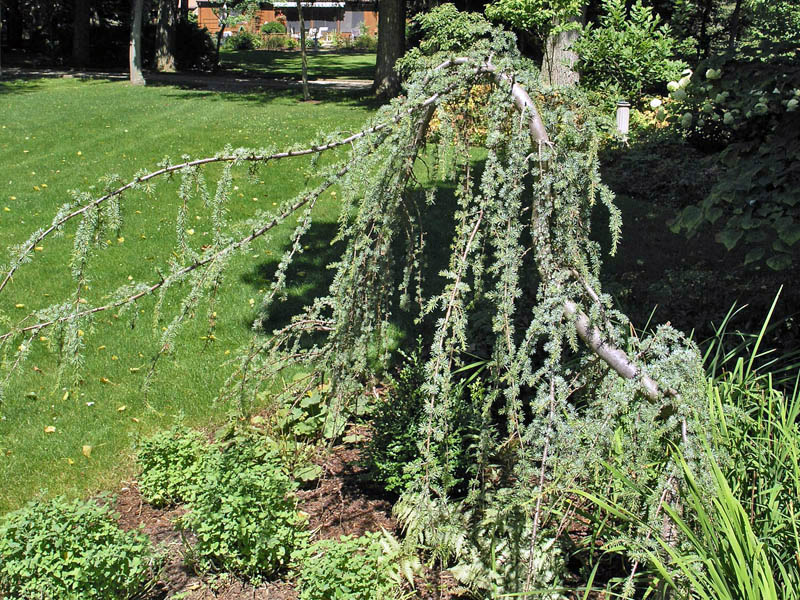
Woody > Cedrus atlantica (Glauca Group) > Cedrus atlantica (Glauca Group) 'Glauca Pendula'
Cedrus atlantica (Glauca Group)
'Glauca Pendula'
Weeping Atlas Cedar
Origin: Today both the cultivar 'Glauca' and the variety glauca names have been dropped in favour of the classification Glauca Group. Unique cultivar names remain like 'Pendula', with the plant name being Cedrus atlantica (Glauca Group) 'Pendula'.
| Family |
| Pinaceae |
| Genus |
| Cedrus atlantica (Glauca Group) |
| Cultivar |
| 'Glauca Pendula' |
| Category |
| Woody |
| Type |
| Tree (evergreen) |
| Synonyms |
| Cedrus atlantica 'Glauca Pendula' |
| USDA Hardiness Zone |
| 6 - 9 |
| Canadian Hardiness Zone |
| 4b - 6b |
| RHS Hardiness Zone |
| H6 although I have seen it survive in protected areas in H7. |
| Temperature (°C) |
| -20 to -15 |
| Temperature (°F) |
| -10 |
| Height |
| 15 - 40 m |
| Spread |
| 10 - 30 m |
Photographs
Description and Growing Information
Flowering Period
| Landscape |
| Specimen tree. |
| Cultivation |
| Full sun and partial-shade. Well-drained and moist soils with a pH of acidic. Prefers loam soil. Drought tolerant. |
| Shape |
| Weeping, somewhat pyramidal and informal. |
| Growth |
| Slow |
| Pests |
| Tip blight, root rot, black scale and deodar weevil may be a problem. |
| Habitat |
| Horticultural origin. |
| Flower Description |
| Monecious, male cones very densely set, erect, finger-shaped, usually more numerous on lower portion of the tree. Female borne in stout and erect cones. |
| Fruit Description |
| Cones rather short, upright on upper side of branches, require 2 years to mature; glaucous green while developing. |
| Colour Description |
| Intense blue foliage, but prone to winter burn which gives it a brown colour. The female cones are greenish-purple in colour. Mature cones are brown. |
| Texture Description |
| Medium texture. |
| Notable Specimens |
| The Niagara Parks Botanical Gardens and School of Horticulture, Niagara Falls, Ontario, Canada. |
| Propagation |
| Grafted. |

